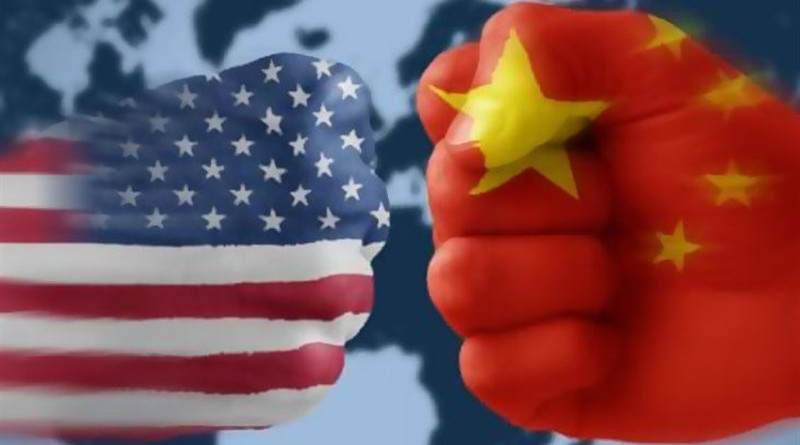Getting Real About US–China Cooperation
By Jacob Stokes*
One of the toughest questions in the current frosty era of relations between Washington and Beijing is whether and how to pursue cooperation amid ‘extreme’ geopolitical competition. Despite its importance, the practice of cooperation rarely receives the type of rigorous analysis necessary for devising effective strategy.
A close look reveals US legacy rationales for pursuing cooperation with China are not producing the desired results. But adopting a few principles can better integrate the competitive and cooperative elements of the relationship while making future attempts to coordinate with Beijing more effective and sustainable, even if the overall agenda will be much narrower in scope and ambition.
Cooperation is theoretically meant to serve two purposes in US–China relations.
First, to work together in areas where the two powers have nominally overlapping interests. These include global health, nuclear nonproliferation, counterterrorism, fighting climate change and international economic development.
Second, to provide stability for the relationship that can even out tensions stemming from areas where the two powers disagree. The thinking has been that working together on shared aims helps create a more constructive setting for dealing with disputes.
But right now, both rationales for US–China cooperation face significant headwinds. Nearly every ostensibly cooperative area needs to overcome major obstacles before the two sides can work together in a meaningful way. In other words, the two sides are struggling to cooperate even on ‘cooperative’ issues.
Events surrounding the COVID-19 pandemic have upended global health coordination. Working together on nuclear issues is complicated by China’s support for North Korea and its expanding arsenal. Beijing’s genocide against the Uyghurs has tainted joint counterterrorism. China’s support for coal power is a stumbling block in the battle against climate change. And its rejection of established standards on lending and the social and environmental impact of Belt and Road infrastructure projects have created problems for international economic development.
Further, US policymakers are questioning what additional value cooperating with China provides relative to devoting the same energies to building cooperation with allies and partners, or simply improving US implementation. They are asking what, specifically, is the upside — beyond the fuzzy notion that cooperation is nice?
As a result, the steadying effects previously provided by areas of cooperation, which were always modest, are now almost totally gone. Habits of cooperation are turning into habits of competition. This dynamic has been accelerated by US policymakers’ view that China has sought leverage during disputes by threatening to withdraw its support for cooperative undertakings.
A few principles should shape US thinking about whether and how to cooperate with China going forward.
First, both sides should lower expectations in recognition that bilateral relations are at their worst point in nearly half a century. Both sides need to acknowledge that the space for true cooperation is relatively narrow pending substantial improvements in the atmosphere between the two countries. Paradoxically, expecting less could enable both sides to approach issues with more realism and thereby produce better results than would have been possible if either side were holding out for a return to the previous ‘engagement’ era.
The wording of US official statements, which shows a hesitance to even use the term ‘cooperation’, suggests that the shift is already underway. This includes the mention of ‘practical, results-oriented engagements’, Secretary of State Antony Blinken’s statement that the relationship will be ‘collaborative when it can be’ and State Department spokesman Ned Price’s reference to ‘rather narrow areas of tactical alignment’. Relatedly, policymakers should not assume that any issue fits neatly into the category of competition or cooperation; almost every issue will have elements of both.
Second, future collaborative efforts should focus on concrete rather than symbolic actions. Symbolism can be a useful tool in diplomacy, but for the next few years the onus will be on producing tangible benefits. Generating positive optics or suggesting future potential will not be enough. In addition, outcomes cannot be linked to other areas in ways that make them susceptible to backsliding by Beijing. Compartmentalisation, rather than linkage, should be the watchword.
Third, joint actions should be pursued through multilateral processes wherever possible. Working via such channels will have the strategic benefit of demonstrating to third parties that the United States is not the country seeking all-out confrontation. It will simultaneously dispel concerns about an inverse scenario where the two superpowers divide up the world between them, apprehensions that have gone dormant but never disappear.
Prioritising multilateral initiatives would also force China to confront paying diplomatic costs with several countries, not just the United States, if it considers backing out of an agreement. And it would reduce the domestic political costs in both Washington and Beijing of seeking to work together in the first place. Lastly, security initiatives to reduce risk and improve crisis management stand as the major exception to the multilateral preference and are still worth pursuing bilaterally. But this agenda must also grapple with extensive practical implementation challenges, most notably an apparent lack of interest in Beijing.
Cooperation and coordination can still play a role in US–China relations, albeit a much reduced one. But only if policymakers pursue it with the right mindset.
*About the author: Jacob Stokes is a Fellow in the Indo-Pacific Security Program at the Center for a New American Security.
Source: This article was published by East Asia Forum


“Getting Real About US–China Cooperation?” Get real. US doesn’t want cooperation. USA wants DOMINATION!